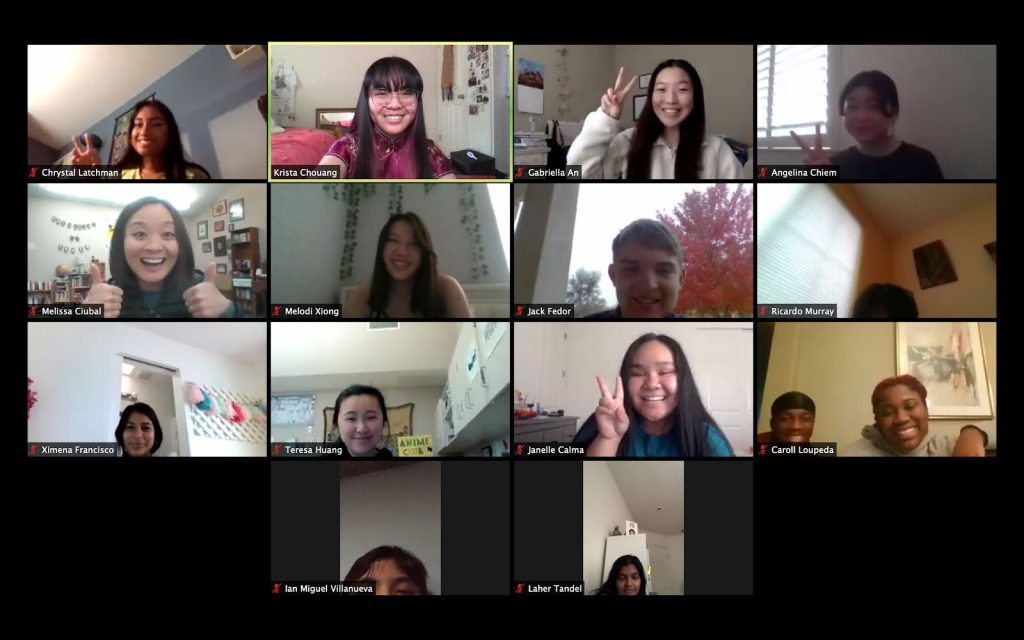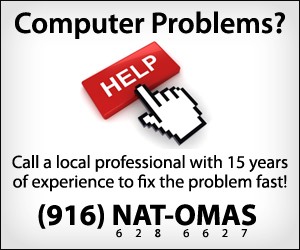By Krista Chouang
Staff Writer | The Pacific Times
During the Asian Cultural Festival held last month, participants shared their experiences being Asian American and ways others can be more inclusive.
On Nov. 13, the Asian American Activism Club, Asian/Pacific Islander Club, and Neighborhood Friendly Youth Club collaborated to create a Zoom discussion on shared experiences as people of color, focused mainly on the Asian American experience.
The discussion was meant to take the place of the Treasure Chest Multicultural Festival typically held every year which did not occur due to distance learning. Treasure Chest Multicultural Festival would typically take place in the NP3 gymnasium where high school and middle school students would share their cultures with foods, clothing, and performances.
Asian Club leaders Angelina Chiem, Kristi Hom, Gabriella An, Teresa Huang, Janelle Calma, Caitlin Calma, Melissa Ciubal, Chrystal Latchman, Laher Tandel, and Robert Hagarty brought together 14 students and teachers to share their answers to five different discussion questions.
The main themes discussed included the Asian American experience and ways others can respect different ethnicities and be more inclusive of all cultures.
A common Asian American experience is having to conform to the majority’s expectations, participants said. By majority, they mean mainstream American culture.
“It feels like just existing is an act of resistance,” one participant said. “People need to respect our existence.”
One way Asians conform to fit typical American standards is being Americanized in many ways, including only being taught and exposed to American history, participants said. Many shared during the event that this leads them to hide their culture, and if they don’t hide it, they are seen as “too cultural” or not taken seriously. As a result, they work harder to treasure their culture because it’s not common practice among others of different ethnicities.
It was shared by participants that their names are a part of their identity which is often singled out. Many participants shared stories of how their parents renamed themselves when they immigrated to America in order to blend in, and also gave their children American names in an effort to avoid racism. The parents feared that if they gave their children ethnic names, they would be subjected to people’s intentional mispronunciation or their future job resume being disregarded solely because of their name, participants said.
However, according to participants, racism towards Asians is still extremely common and not considered a big deal, even to the point where the Asian community accepts it without fighting back because they are expected to be the model minority. Participants said that they fear speaking up because their feelings will be invalidated as they had been in past experiences by others saying it was “just a joke.” One participant shared an experience of when they were being taunted by others using the phrase “ching chong” as an imitation of the participant’s language, but when they spoke up, everybody else brushed it off as a joke.
Participants shared that a downside to being Asian American is the expectations from both family and people who are not Asian.
According to participants, an expectation from Asian families is to have lighter skin; “Colorism,” prejudice or discrimination against individuals with a dark skin tone, typically among people of the same ethnic or racial group. It has led to the skin-whitening industry to be successful in Asian countries inhabited by darker-skinned people. Many participants shared their parents have made them use various skin whitening products like lotion or papaya soap.
Participants said they are expected to be good at math simply because they’re Asian, which puts a lot of pressure on them.
The group agreed there are ways those who are not Asian can be more inclusive.
Although different cultures are integrated in America, the cultural significance is scarcely recognized, said one participant. Many agreed during the event that the best and most realistic way for society to value ethnic differences is representation in politics.
One way to be more inclusive is to learn to differentiate between Asian ethnicities and respecting them, the group said. Participants shared that they would much prefer to be known by their actual ethnicity — such as Filipino, Hmong, Laotian, or Nepali — instead of people making assumptions.
“Not every light skinned Asian is either Chinese, Japanese, or Korean,” one participant said.
All participants at the event agreed that learning how to correctly pronounce Asian names is essential to being more inclusive and would begin to erase the obligation that parents of color feel to rename themselves or their children stereotypical American names.
Calling out racism disguised as a joke and putting a stop to saying subtly offensive phrases would make racism towards Asians less normalized, participants said. Some of these phrases that participants have personally experienced at school include asking someone “what kind of Asian are you,” being called a banana or Twinkie, being told their food is weird, and being asked if they eat dogs or bats.
As the meeting came to a close, one student said a positive side to American culture is that there is no visual of American because we are all different. The “average American” is not a white person because America is a melting pot built by different ethnicities, and that hopefully one day people of color can be fully accepted as American without having to give up their culture.
Participants said as children of immigrants, they face many struggles just by existing as a minority.
Said Janelle Calma, quoting her mom, “‘The troubles you face as a minority doesn’t make you any less of a human, but stronger in willpower and sense’.”




Speak Your Mind
You must be logged in to post a comment.